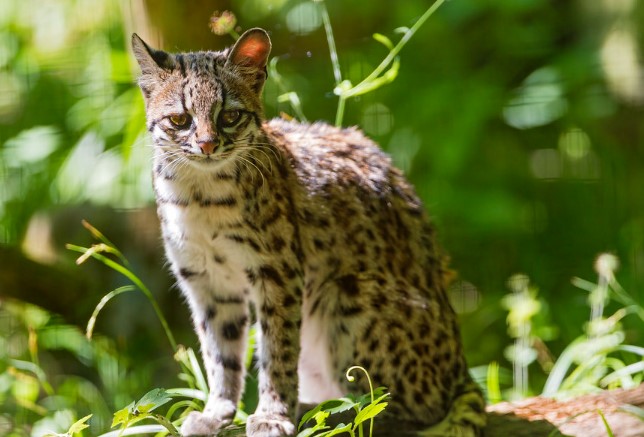Oncilla cat (Leopardus tigrinus) is similar to margays, but they are smaller and more delicately built, with larger ears and a narrower muzzle. In recent years, camera traps have revealed that oncillas thrive also in savannas, thorn scrub, and lowland forests; previously, they were considered forest cats confined to lowlands and cloud forests.
A 6-pound cat (2.7 kilograms) hunts very small prey as might be expected. Most of the prey that oncillas eat weighs less than 3.5 ounces (100 g), which is roughly the size of a medium-sized tomato. They also eat small mice, rats, lizards, centipedes, grasshoppers, beetles, and tiny opossums. In heavily forested parts of its range, some melanistic oncillas have been reported. It takes 38 to 56 days for kittens to take solid food, but they are weaned after three months.
A night hunter in a forest habitat will often find oncillas, but a day hunter in a savanna or scrub forest will find them. A female oncilla typically gives birth to one kitten after a lengthy gestation period, similar to a margay and ocelot. Because populations take a long time to recover from losses, they are more vulnerable to hunting and trapping.
There may be two species of oncillas, based on a recent genetic analysis. Although they are mostly nocturnal, they are more likely to be active during the day in places like Caatinga, where they feed on diurnal lizards. In close proximity to one another, oncillas make short, gurgling calls, while young ones purr.







